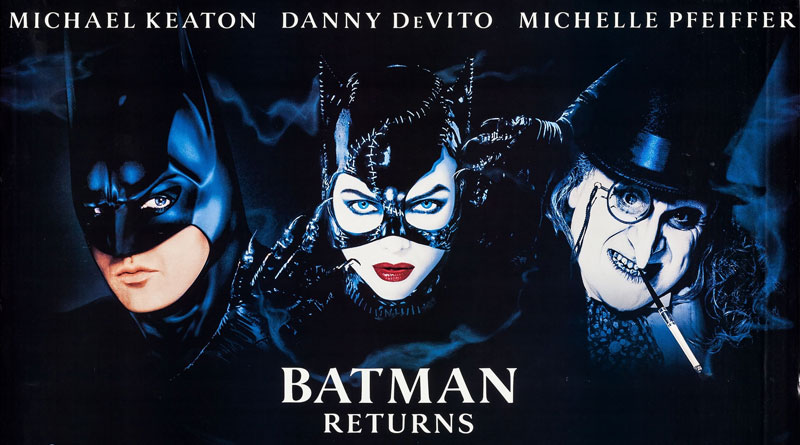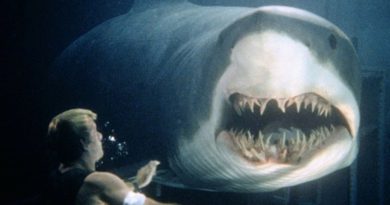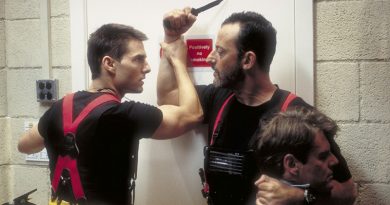Batman Returns at 30: A Subversive Anti-Blockbuster Sequel
Timing and perception do make a lot of difference between the past and the present. And that includes the way we see things in a movie. Earlier this year, a dark and gritty Batman movie was largely greeted with overwhelmingly positive responses.
But assuming this kind of superhero movie was released thirty years ago, the result would be different altogether. Both divisive and polarising, to be exact. This is exactly what happened to Batman Returns back on June 19, 1992. Most critics at the time found the otherwise highly-anticipated sequel to 1989’s mega-successful Batman was “too dark” and “violent”.
Looking back at the movie, Batman Returns is worlds apart from what Tim Burton has given us in the first movie. The sequel leans closer to his signature kooky and macabre style that (die-hard) fans of his works would appreciate better than general audiences.
This, of course, explained why the sequel didn’t manage to score a bigger hit, let alone matched the 1989 original. Sure, it did make history in the box-office opening weekend with a then-astounding US$45.7 million during the first 3 days. It even held the top spot for three consecutive weeks, beating subsequent newcomers like Unlawful Entry as well as A League of Their Own and Boomerang.
It only took A League of Their Own, which previously opened in No. 2 to overtake Batman Returns. By the end of its theatrical run, the sequel made US$162.9 million at the domestic box office and another US$104 million internationally for a worldwide total of US$266 million against an US$80 million budget. By comparison, Batman did better business on both sides (domestic and international box office) with a whopping US$411.6 million.
I remember watching Batman Returns when I was a kid and didn’t really like it at first. But as years went by, I grew fond of the sequel and appreciated Burton’s unique approach in terms of visuals, theme and storytelling. He made Batman Returns truly his own. It’s definitely not kid-friendly or even the kind of traditional, play-safe Hollywood blockbuster during the 1990s era.
The sequel, which runs a little over two hours long, sees Burton pretty much re-imagines a superhero movie as a bleak tale of depravity filled with freaks and outcasts. It may take place entirely during the Christmas season but Burton isn’t interested to make this a jolly good time. Beneath all the blanket of white snow and a towering Christmas tree in Gotham City lies a grim undertone waiting to wreak the joy associated with the festive season.
The freaks and outcasts in question include The Penguin (Danny DeVito) and Catwoman (Michelle Pfeiffer), where the former lives in a sewer with his beloved penguins and army of clowns who served him. DeVito’s iconic portrayal of the character is certainly one for the ages and remains his signature role to this day. His grotesque look and appearance are the result of the late Stan Winston’s extraordinary make-up effects and DeVito’s unhinged performance seals the deal.
I also love his backstory, which is a tragic one. Burton spends considerable time telling the side of his story right from the opening scene of the movie when he was just a baby. His parents (Paul Reubens and Diane Salinger) couldn’t accept the fact they have a freak as their son and decided to dump him somewhere in the park river. And over the course of the movie, Burton portrays The Penguin as a misunderstood villain who just wanted to be accepted and treated without prejudice like any other normal human being.
Then, there’s Michelle Pfeiffer. Past and present actresses that appeared in feature-length movies from Lee Meriwether in 1966’s Batman to Halle Berry (2004’s Catwoman), Anne Hathaway (2012’s The Dark Knight Rises) and recently, Zoe Kravitz in The Batman have seen different interpretations of the iconic femme fatale character of Catwoman. But Pfeiffer stood out the most and still is and I’m not saying this because of the strong nostalgia factor. She gives her all in the role of a lifetime, all sexy and twisted like no others when she first donned the skintight black leather costume.
Her dominatrix-like personality is daring and vividly realised that I always wonder what if other potential candidates such as Annette Bening, who was originally cast but forced to drop out due to pregnancy would bring in instead. Even way before we get to see Pfeiffer becomes Catwoman in the movie, she already nailed her role well as the meek secretary, Selina Kyle.
Both villains in Batman Returns shared the same character traits — they are actually lonely souls, despite all their theatrics and showy mannerisms. Burton does a great job embracing the theme of loneliness and he doesn’t forget to reflect that on Bruce Wayne/Batman character as well.
While it remains a pity to see Michael Keaton plays second fiddle in his own movie, at least Burton deserves credit for depicting the complicated relationship between Batman and Catwoman. Batman may have been a saviour in Gotham City but beyond his tough and intimidating appearance, Bruce Wayne is just as lonely until he finds comfort in Selena Kyle/Catwoman and ends up romantically involved with her.
Both of them seem to be meant for each other but the respective struggles with their duality prevented them otherwise. Bruce Wayne/Batman believes that she can be saved, even with her constant wrongdoings and her particular thirst for vengeance against her former employer (Christopher Walken’s Max Schreck in a perfectly slimy performance), who tries to murder her. No doubt the dysfunctional love story between the two of them remains one of the sequel’s biggest strengths. And most of all, it was a significant improvement over the weak romantic subplot between Bruce Wayne and Kim Basinger’s Vicki Vale in Batman.
Now, if only Burton had his way and Warner Bros. didn’t end up getting cold feet and preferred a more kid/family-friendly fare for the third Batman movie, we would have his version instead of Joel Schumacher’s. The latter, of course, brought us a different tone (read: more campy and colourful) in Batman Forever three years later.
Despite Burton taking the co-producer credit, the third movie was more of a standalone sequel with a different cast altogether (i.e. Val Kilmer took over the title role after Michael Keaton declined to return). Burton’s version was scrapped altogether and personally, I was more interested to see how he brought together Keaton, Pfeiffer (yes, Catwoman was alive at the end of Batman Returns) as well as Billy Dee Williams reprising his role as Harvey Dent and Robin Williams to play The Riddler.
Thirty years may have passed since its initial release but Batman Returns manages to stand the test of time and remains one of the best Batman movies ever made. The dark and grim tone would never see the light of day again when Joel Schumacher took over the franchise and made two movies. It wasn’t until the embarrassing failure of 1997’s Batman & Robin both critically and financially saw Warner Bros. subsequently rebooted the franchise. That reboot in question would be Christopher Nolan’s Batman Begins in 2015 and the long-missed dark tone was reinstated as it should be.




